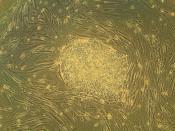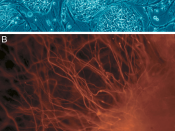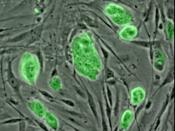STEM CELL RESEARCH
Medicine today is improving rapidly toward the development of more efficient cures for people with diseases. In the past, doctors could usually only treat the symptoms of illness, treatments rarely addressed the causes of disease. Today, many of the cures being developed by scientists are based on highly developed techniques that are able to target the causes of disease rather than simply treating the symptoms. One of those techniques is called stem cell therapy.
Stem cell therapy can be defined as a part of a group of new techniques, or technologies that rely on replacing diseased or nonworking cells with healthy, working ones. These new techniques are being applied experimentally to a wide range of human disorders, including many types of cancer, neurological diseases such as Parkinson's Disease and ALS (Lou Gehrig's Disease), spinal cord injuries, and diabetes.
Stem cells have two important characteristics that distinguish them from other types of cells.
First, they are unspecialized cells that renew themselves for long periods through cell division. The second is that under certain experimental conditions, they can be induced to become cells with special functions such as the beating cells of the heart muscle or the insulin-producing cells of the pancreas. Stem cells differ from other kinds of cells in the body. All stem cells regardless of their source have three general properties: they are capable of dividing and renewing themselves for long periods; they are unspecialized; and they can give rise to specialized cell types. Adult stem cells have been identified in many organs and tissues. One important point to understand about adult stem cells is that there are a very small number of stem cells in each tissue. Stem cells are thought to reside in a specific area of each tissue where they may...


